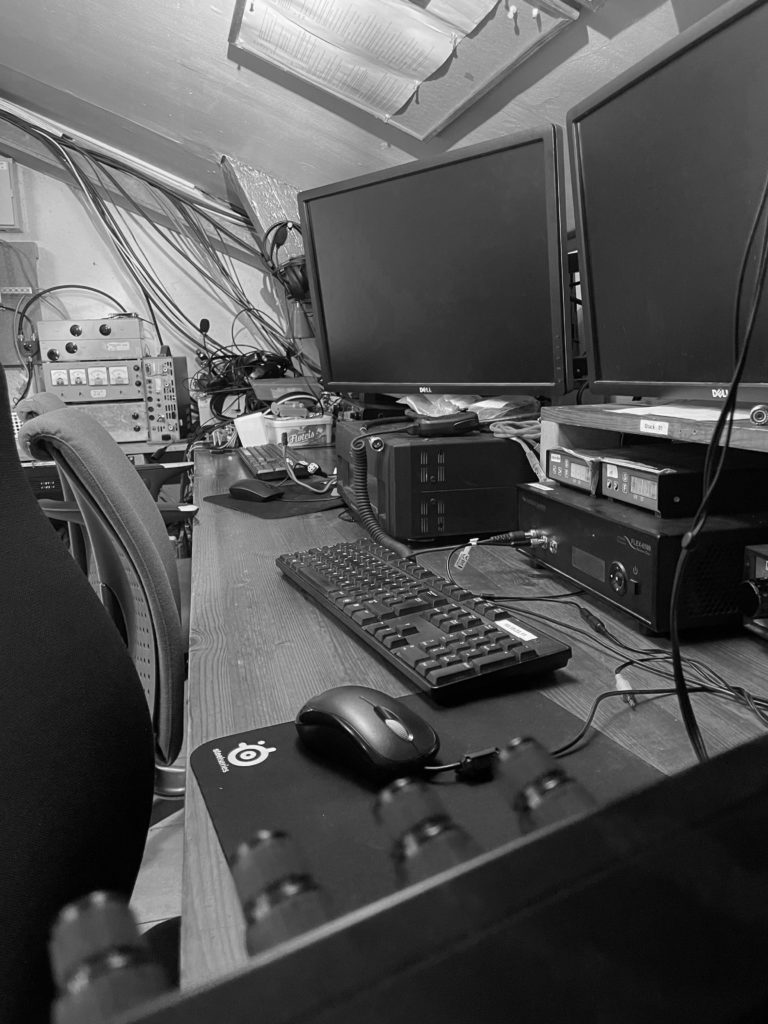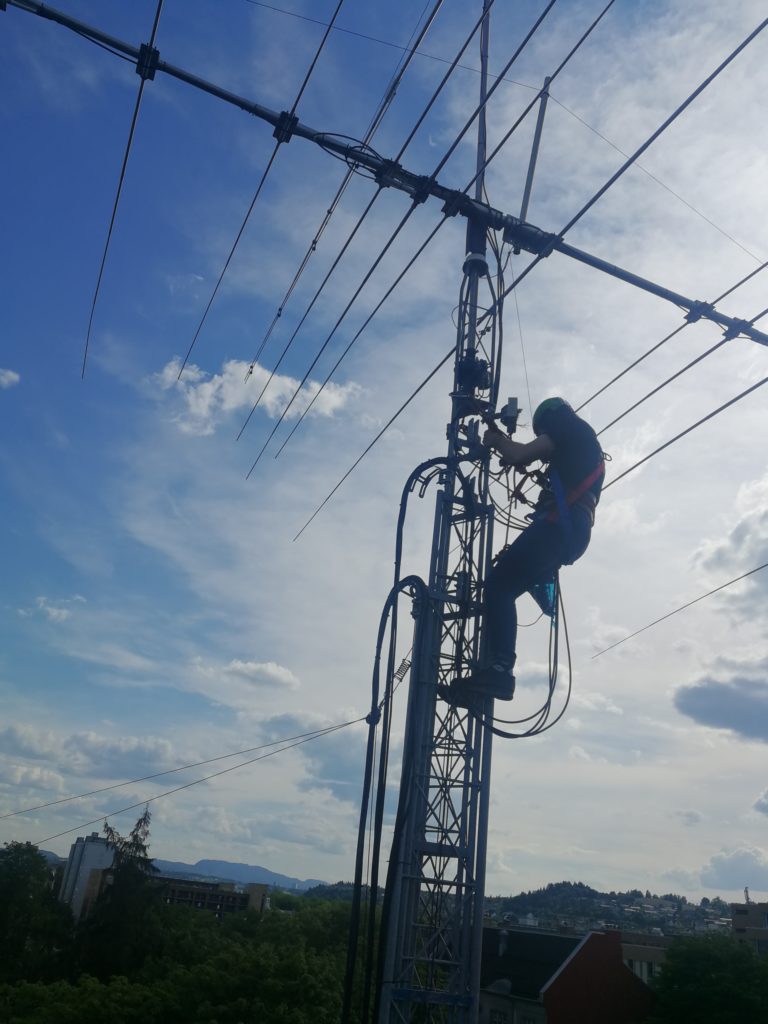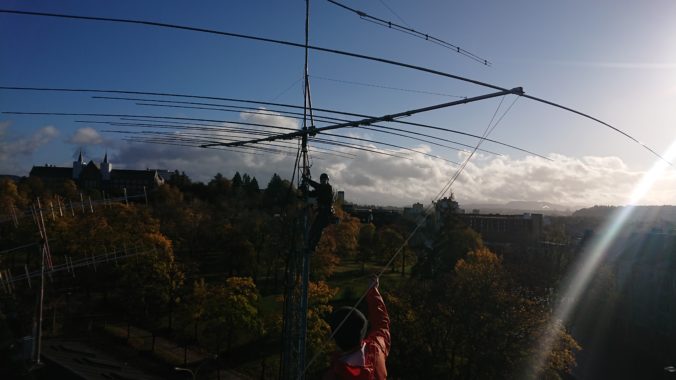Back in the spring of 2020, we discussed some issues we found with the rotor on the HF beam following some maintenance work on it. Later, in 2021, we wrote about the finishing touches to get the beam back in its original working order. However, we never really went into detail about the hurdles we faced throughout the project.
Firstly, some background information. Due to the circumstances around the outbreak of the COVID-19 pandemic, our shack had been left unused for several months before we came around to the maintenance work in 2020. It is unknown if it was this pause in activity or just general wear from our often harsh climate that caused further problems… It was however safe to say, when the snow left and the rotor cable was put back and hooked up, the HF beam rotor was completely immobile.

(Photo: LB0VG)
Now, there are many things that can stop a rotor from spinning, despite being hooked up. The first suspect was the cable itself. Maybe some of the wires were crossed? Maybe some of the lines were broken? Maybe a bad connection or the leads in the cable were too thin?
Although some of these issues are easy to check for, in theory, it can be a bit of a challenge when the cable stretches tens of meters across half a building. It is possible to test the continuity to get an indication of what is going on, but in our case, everything looked fine. The cable pair going to the motor had the low DC resistance expected. Despite this, the motor would not turn, even when hooked up directly to the shack DC power supply.
One of our long-time members, Øyvind (LA3WUA), mentioned that the rotor sometimes would temporarily stop working in the past. He pointed out that while the rotor itself is designed to handle 18V, we usually operate it at 13.8V. In the past, turning up the voltage to 18V would usually fix their rotor issues. We tried turning up the shack PSU to its maximum of 16V, but to no avail. The rotor still wouldn’t budge.

To get any further, the inspection would have to be done directly at the rotor. This is an operation involving climbing the mast and using multimeters/power supplies, and of course, that requires two people. Fortunately, the weather turned nice around mid-summer, so we tried to run the motor by applying voltage directly to it in the mast. When we still got the same result, no trace of movement at all, we conclude that maybe it was time for the rotor to be replaced.

From the left: LB4FI, LB5PI, LB1HH
(Photo: LB5DH)
Our HF mast has had the same rotor, a SPID BIG-RAK, since around 2010. Before that, we used to have “a beast of a 3-phase rotor” to quote one of the older members of the club (along with the typical rant about things being better/more durable in the past). As for the current rotor in question, we just so happened to have an additional one that we typically use for big-rig portable setups (for example during Field Day).

This photo is from August 2011, notice the lack of a shortened 40m dipole on the top of the HF mast.
With: LA7VRA
It would still take a month to convince everyone that a broken rotor itself truly was the problem. Changing the rotor would require thorough planning, as well as a large number of people, which turned out to be a problem as most of the students in the club go home to their families during summer vacation. After the vacation, the next hurdle turned out to be a worsening corona-situation in town. We spent this time ordering new and better safety equipment for working in the mast and on our roof, like new harnesses.

(Photo: LB5DH)
In the end, we managed to squeeze in some time after the corona-situation improved in October. We did a final inspection in the middle of the month and then arranged an all-hands working-day two weeks later. And this was in fact, just in time! If we had waited a bit longer, the frost would have required us to postpone until the spring of 2021.
More to follow!


0 Comments
1 Pingback